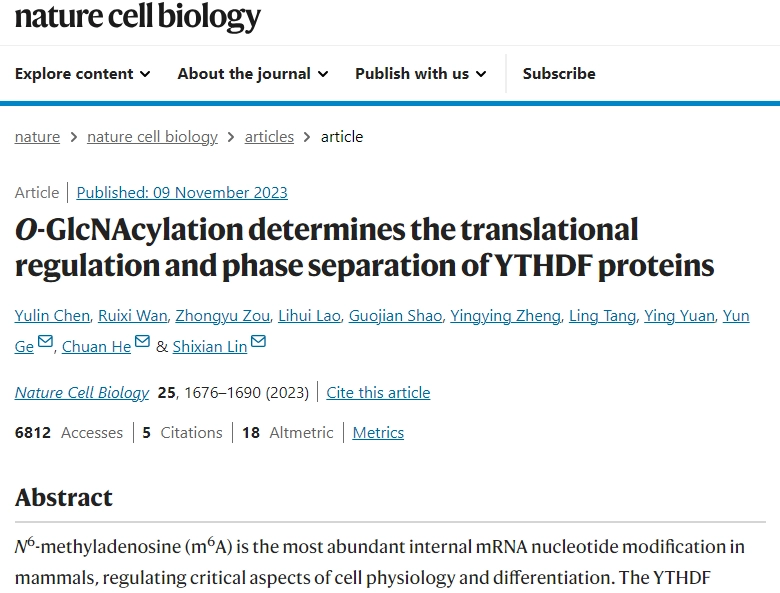RiboLace
8 March 2024
O-GlcNAcylation determines the translational regulation and phase separation of YTHDF proteins

Chen Y, Wan R, Zou Z, Lao L, Shao G, Zheng Y, Tang L, Yuan Y, Ge Y, He C, Lin S. O-GlcNAcylation determines the translational regulation and phase separation of YTHDF proteins. Nat Cell Biol. 2023 Nov;25(11):1676-1690. doi: 10.1038/s41556-023-01258-x. Epub 2023 Nov 9. PMID: 37945829.
N6-methyladenosine (m6A) is the most abundant internal mRNA nucleotide modification in mammals, regulating critical aspects of cell physiology and differentiation. The YTHDF proteins are the primary readers of m6A modifications and exert physiological functions of m6A in the cytosol. Elucidating the regulatory mechanisms of YTHDF proteins is critical to understanding m6A biology. Here we report a mechanism that protein post-translational modifications control the biological functions of the YTHDF proteins. We find that YTHDF1 and YTHDF3, but not YTHDF2, carry high levels of nutrient-sensing O-GlcNAc modifications. O-GlcNAcylation attenuates the translation-promoting function of YTHDF1 and YTHDF3 by blocking their interactions with proteins associated with mRNA translation. We further demonstrate that O-GlcNAc modifications on YTHDF1 and YTHDF3 regulate the assembly, stability and disassembly of stress granules to enable better recovery from stress. Therefore, our results discover an important regulatory pathway of YTHDF functions, adding an additional layer of complexity to the post-transcriptional regulation function of mRNA m6A.
Keywords: RNA modification, m6A, YTHDF, protein post-translational modifications

